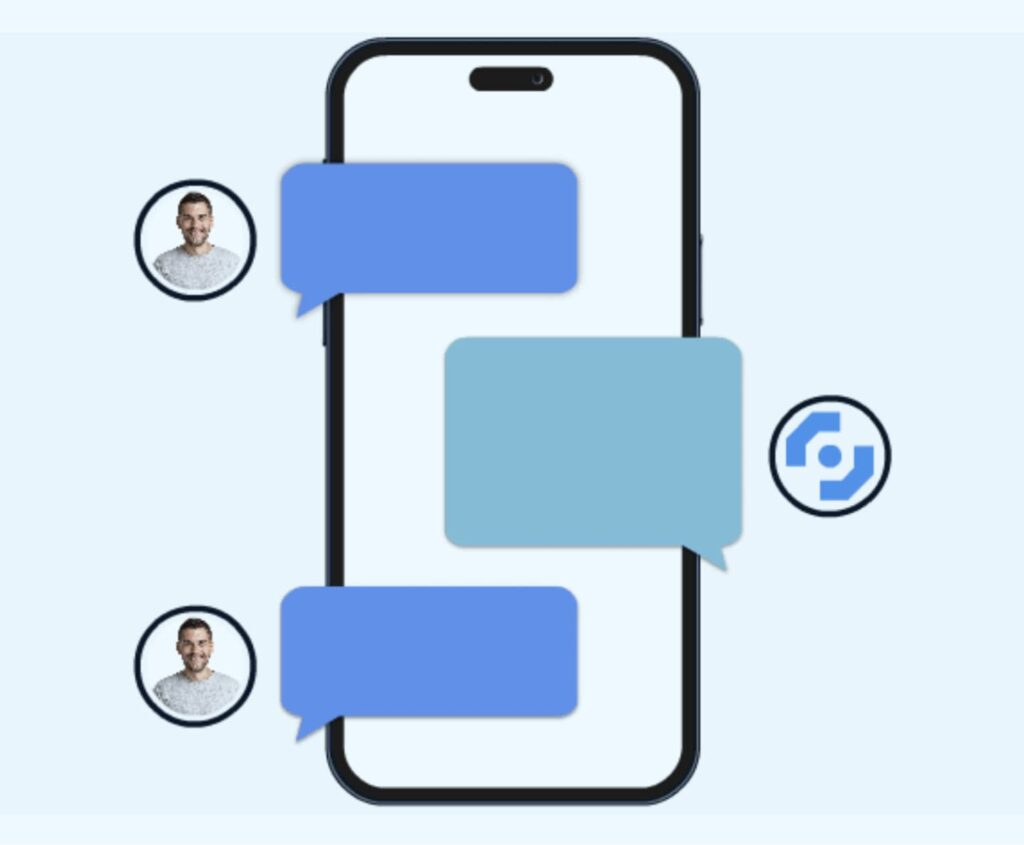Blog
The AI Revolution in Software Development: How AI Coding Assistants Are Transforming Developer Roles

The AI Revolution in Software Development: How AI Coding Assistants Are Transforming Developer Roles
Today, we’ll be talking about something that’s really shaking up our industry right now, and that is the AI revolution in software development and how AI coding assistants are transforming developer roles.
As we push through 2025, tools like Cursor AI, GitHub Copilot, and others have gone from “neat little experiments” to “how did I ever work without this thing?” for tons of developers.
These AI coding assistants promise something pretty incredible, turning what used to be weeks of coding work into just a couple of days. But here’s the thing, and this is important: beneath all that promised efficiency is a much messier reality that’s changing not just how we build software, but who builds it and what it actually feels like to be a developer day-to-day.
For the senior folks with years under their belts, these AI tools can be like having a small army at your disposal. You leverage your experience while the AI handles the grunt work, pretty sweet deal, right?
But for juniors just starting out? Man, it’s complicated. The traditional learning path is getting all disrupted, and suddenly they need skills nobody was teaching a few years ago.
This whole transformation raises some really big questions about our profession. Will companies need fewer developers?
Will coding still be, well, coding as we know it?
And here’s the big one: How will tomorrow’s senior developers get the experience they need if AI is handling all the tasks we used to give to juniors?
Throughout this article, I want to dig into how AI is reshaping software development and the developer recruitment process in 2025, not just the rosy productivity promises, but the actual day-to-day realities.
We’ve been talking to people across the industry and digging into the research, and the impacts are really different depending on where you are in your career.
Whether you’re a battle-hardened senior dev, a newcomer trying to break in, or someone managing teams through this transition, understanding what’s happening is absolutely crucial for adapting to this new reality.
We’ll also share some practical strategies you can start using today. So let’s dive in, shall we?
How AI Coding Assistants Are Transforming the Software Development Landscape in 2025
Look, our industry has been through a ton of changes over the years, right? We’ve seen object-oriented programming come along, then frameworks became a big thing, and cloud computing totally changed the game. But this AI stuff? This is different. I’d argue it’s the biggest shift we’ve seen since the internet itself changed everything.
Back in the day, and I’m not even talking that long ago, AI tools were just glorified autocomplete. Now? It’s 2025, and these things are writing entire functions, debugging complex issues, turning business requirements into actual working code, and even designing system architectures from high-level descriptions.
McKinsey wasn’t kidding when they said AI has “the potential to fundamentally transform the development of software products, increasing the pace of the process and the quality of the final output.”
Though I’d say the quality part is, well, complicated… more on that later.
The adoption rate has been absolutely wild. GitHub did this survey last year, showing that over 80% of professional developers are now using some form of AI in their daily work. That’s up from just 27% in 2022!
That’s not gradual adoption, that’s a tidal wave. And it’s happening because these tools are actually getting good, and because every company out there is pushing teams to deliver more stuff faster.
Now, not everyone’s jumping in with both feet. Some companies I’ve talked to have gone all-in, using AI at every stage from requirements to testing. Others are being more cautious, especially with mission-critical components. Can’t really blame them, would you want AI generating code for, say, airplane navigation systems without heavy human oversight? Yeah, me neither.
What’s really fascinating to me is how AI is blurring the lines between traditional roles. Developers aren’t spending all day writing code anymore, they’re making higher-level design decisions, figuring out business logic, and solving integration challenges while the AI handles a lot of the routine coding.
It’s completely redefining what it means to be a developer and hiring software developers in 2025. Now it’s all about how well you can direct and collaborate with AI rather than how fast you can type out a for-loop.
Victor, Trusthoring’s founder, was talking to this senior dev at a Fortune 500 company the other day, and she put it perfectly: “We’re evolving from craftspeople who build every component by hand to conductors who orchestrate complex systems with AI doing much of the implementation work.” That’s exactly it! And that evolution creates both opportunities and challenges for developers at all career stages, which is exactly what we’re going to dig into next.
The Productivity Paradox: AI’s Impact on Developer Efficiency and Code Quality
The Promise: Accelerating MVP Development from Weeks to Days with AI
Let’s talk about the most obvious selling point of AI in software development, which is speed. It’s pretty mind-blowing when you think about it. What used to take a developer a full week to build can now be knocked out in just a couple of days with tools like Cursor AI. And this isn’t just marketing hype, I’ve seen it firsthand, especially when you’re starting fresh or building MVPs.
So what’s the biggest bang for your buck? What is AI really good at in a codebase? It’s writing things from scratch, writing MVPs.” That’s the sweet spot. You can feed it technical requirements, documentation, guardrails, and boom, it spits out a functioning application framework. It’s like going from horse-and-buggy to Tesla overnight.
The research backs this up, too. InfoQ published this study last year, showing developers using AI assistants got productivity boosts up to 45% on certain tasks. For startups and entrepreneurs in that race to market, and let’s be honest, who isn’t racing these days? This kind of acceleration can make or break you.
Where AI really shines is with all that boring stuff nobody wants to do, which is generating boilerplate code, implementing standard patterns, and turning requirements into functional structures.
For founders and solopreneurs who just need results, this is game-changing.
The Reality: Debugging Challenges and Code Quality Concerns with AI-Generated Code
But here’s where it gets messy. Sure, AI can spit out code like nobody’s business, but there’s a massive catch that changes the whole equation.
Let’s break it down. “Yes, it only takes you two days, what previously took you a week, but the AI writes code in 10 minutes, and then for the remainder of the three days, you debug the AI’s code, okay? That’s what it looks like, more or less. And that is not fun.”
Not. Fun. At. All.
Why does this happen? Well, current AI systems have some pretty significant limitations. They’re like goldfish when it comes to large, complex codebases, they just can’t maintain context and consistency. They “hallucinate” features or implementations that make no sense in your existing system.
You end up with “eight different button styles across your interface, because it just won’t know or remember how you do buttons.” It works a bit like a senile developer, you know? A senile junior to mid-level developer who keeps forgetting things.
DevOps.com published a study on AI in Software development back in February that confirms exactly what I’m talking about. They found that while AI tools speed things up, they do it “at the expense of maintainable, quality code.” They analyzed AI-generated code and found it’s often riddled with subtle bugs and maintenance nightmares that only show up later when you’re already in too deep.
This completely flips what being a developer feels like day-to-day. Traditional development has always been a mix of creative coding and debugging, with most of us enjoying the creative part way more. AI tools flip that ratio on its head, less time creating, more time debugging someone else’s mess. Or something else’s mess, I guess.
Developers hate debugging, especially debugging other people’s code. They just cannot stand that. That’s the worst thing about a developer’s job. Well, apart from maybe talking to project managers, right? That’s maybe second on the list that developers hate! But jokes aside, when most of your day becomes debugging AI-generated code instead of crafting your own solutions, job satisfaction takes a nosedive.
This productivity paradox explains why we’re seeing such mixed research results. Some studies show these amazing productivity gains, while others, like that CIO report from last September, found “no significant gains” in actual output.
The truth? It totally depends on what you’re building. New projects? Big wins. Complex existing systems? That’s where the headaches start.
The Diverging Impact: How AI Affects Junior vs. Senior Software Developers
Senior Developers: Enhanced Value and Productivity Leverage with AI Tools
Now, here’s where things get really interesting. For the seasoned pros, the senior developers who’ve been around the block a few times? AI isn’t a threat, it’s like getting a superpower. As we’ve seen firsthand, “It doesn’t really affect senior people. If anything, it makes them even more valuable because they now can do the work of themselves and an entire team supporting them.”
Why is that? Well, think about it. Senior devs have this massive contextual knowledge bank in their heads. They’ve seen patterns repeat, they know where the bodies are buried in codebases, and they can smell a bad implementation from a mile away. So when they’re working with AI, they can immediately tell when it’s going off the rails.
They know exactly how to break down complex problems into the right prompts, and they can stitch together AI-generated components into something that actually works. The numbers back this up, too.
Forbes had an article on how generative AI is revolutionizing software engineering, where they stated that “senior engineers saw their productivity rise by 48% when integrating GenAI tools.” That’s huge! They’re tackling bigger projects and delivering solutions faster than ever before. And companies are starting to realize this value.
Some developers see massive opportunities in salary increases. We’re talking 50%, 100%, right? I’m not exaggerating here. Let’s assume a regular senior developer, their salaries, let’s say $8,000, whatever, plus minus, some might now come up and say, well, I want double that because I will endure this pain, but I will deliver so much more value to you.
And honestly? That makes perfect economic sense. If one senior dev with AI can do what used to take a whole team, why wouldn’t companies pay them more?
They’re still saving money overall. For seniors willing to adapt and embrace this new way of working, yeah, it means dealing with the debugging headaches we talked about earlier, but the financial upside can be pretty sweet.
Junior Developers: Navigating Career Entry Challenges in an AI-Driven Industry
But flip the coin, and things look way more complicated for the new kids on the block. The traditional entry path into software development has always been pretty straightforward, right? You start with simple, well-defined tasks, gradually take on more complex stuff, and work your way up. But now? AI is gobbling up a lot of those entry-level tasks.
Obviously, juniors and increasingly mid-level people across all of the domains, whether it’s copywriting, content writing, whatever that is, they really need to skill up, level up, and use AI instead of being replaced by AI. This is especially true in our world of software development.
All those basic UI components, standard CRUD operations, simple integrations, the stuff we used to give juniors to cut their teeth on, AI can handle a lot of that now. And this creates a bigger problem beyond just “how do juniors get their first job?” It’s about the entire pipeline of talent development.
InfoWorld nailed it in an article last September, on Junior developers and AI – “The companies replacing their junior developers with AI will be in big trouble when they realize they have no one to become a senior developer.” It’s a real head-scratcher, right? If entry-level positions vanish, where the heck will tomorrow’s seniors come from?
As Victor mentioned in our latest video on the Trustshoring YouTube page, this reminds him of another profession: “Might be something more like pilots do, right? Pilots, most of them, right? They pay for their entire education, which is private, which costs a lot of money, and they pay for fuel, like imagine, flying a plane is not cheap.”
Could we be heading toward a future where aspiring devs need to make massive personal investments just to get enough experience to be employable? “Imagine you’re 20 years old and you need to rack up, I don’t know what it is, but 10,000 hours in the air and you need to pay for that out of pocket because, well, you need the hours to become a pilot.” That’s a pretty steep barrier to entry, isn’t it?
But it’s not all doom and gloom for juniors. Some research actually suggests AI might help them more than it helps seniors in certain situations.
There was this Reddit post from last September mentioning research that found “Junior developers experienced the most gains (27-39%), while seniors saw smaller boosts (8-13%).” That makes sense if you think about it. AI can help juniors bridge knowledge gaps and learn faster than we ever could before.
The key for juniors isn’t to compete with AI on the basic stuff; that’s a losing battle. It’s about positioning yourself as an AI collaborator. ServiceNow put it well: “A junior application developer will work closely with AI and automation technologies to explore the limits of what they can accomplish.”
This means developing different skills than previous generations of juniors needed. Less about memorizing syntax and more about knowing how to effectively direct AI and validate what it spits out. It’s a whole new ballgame.
The Future of Software Development Careers in an AI-Enhanced World
The Changing Learning Curve: How Tomorrow’s Senior Developers Will Gain Experience
So here’s the million-dollar question that keeps me up at night: how the heck will tomorrow’s senior developers get the experience they need? If AI is handling all the tasks we traditionally gave to juniors, we’re looking at a potential experience gap that could really mess things up long-term.
Another question is – where will the seniors of tomorrow come from? This isn’t just some theoretical concern, it’s a fundamental challenge to whether software development as a profession can sustain itself.
Think about how developers have traditionally learned their craft. You start with the simple stuff, gradually take on tougher challenges, learn from your (many, many) mistakes, and eventually develop that pattern recognition and problem-solving intuition that makes someone truly senior.
But AI is disrupting this whole progression by eliminating many of those foundational experiences that shaped how we all grew as developers.
Imagine you don’t have to do unpaid internships for half a year; you now have to do that for five years to become a senior. That’s a pretty dramatic extension of the pre-professional learning period, isn’t it? And it creates some serious barriers to entry, especially for folks who don’t have the financial resources to support themselves through years of extended apprenticeship.
But look, I’m not all doom and gloom here. New models will emerge, they always do. I can see corporate sponsorship arrangements similar to what happens in other industries:
I’m sure there will be arrangements where, you know, a Google or another company says, sure, we’ll fund this for you, but then we get you under contract for not-so-expensive for the next five years after that or so.
Educational institutions are already adapting too. Several top computer science programs have started integrating AI collaboration skills into their curricula.
They’re teaching students not just how to code, but how to effectively partner with AI tools. The focus is shifting to those higher-level architectural thinking and validation skills that humans are still way better at than machines.
Open source communities could be another part of the solution. By contributing to public projects, aspiring developers can build portfolios showing they can work effectively with AI while still developing crucial collaboration and system design skills. These communities provide the real-world complexity and messiness that you just can’t get from AI training alone.
The Developer Experience Evolution: Finding Satisfaction Beyond Traditional Coding
Beyond all the career path stuff, there’s something more fundamental changing, what it actually feels like to be a developer day-to-day. Traditionally, being a developer has been about the craft of writing code, that satisfaction you get from solving problems through elegant implementations that you create line by line. As AI takes over more of that implementation work, the whole nature of what makes the job satisfying has to evolve.
“Developers are craftsmen, they love their trade, that’s what they like doing. They like writing code. When this creative aspect gets pushed aside in favor of debugging AI-generated code, a lot of developers experience this profound shift in how much they enjoy their work.
This isn’t entirely new, though. We’ve been through transitions before. Initially, you know, any framework that we use today, when frameworks became a new thing, it was something. I can do this better,” drawing parallels to how developers initially resisted frameworks and code generators.
Each of these transitions forced us to redefine our relationship with our craft and find satisfaction in different aspects of the work.
For developers to thrive in this brave new world, they’ll need to find fulfillment in different parts of the process.
Instead of getting their kicks primarily from writing code, successful developers will increasingly find reward in system design, in effectively directing AI tools, and in seeing their ideas come to life way faster than was previously possible.
This shift is also creating opportunities for entirely new specializations. AI prompt engineering, basically the art of effectively communicating with AI systems to get what you want, has already emerged as a valuable skill set. Similarly, being really good at AI output validation and integration is an area where human judgment is still essential and where developers can build valuable, differentiated skills.
We shouldn’t underestimate the psychological impact of this transition. Companies that don’t acknowledge and address this shift in job satisfaction might find themselves with some serious retention problems, even as they’re celebrating all those productivity gains.
Practical Strategies for Thriving as a Developer in an AI-Enhanced Development World
Alright, so we’ve covered a lot of ground about how AI is changing everything. But the big question is: what do we actually DO about it? How do we adapt? Let me break down some practical strategies for everyone involved in this crazy transition.
For individual developers, no matter where you are in your career, you’ve gotta start seeing AI as your collaborator, not your replacement. I’ve been messing around with Cursor AI myself for months now, and here’s what I’ve learned: you can’t just throw AI at every problem and expect magic. You need to be super strategic about where you use it.
If you’re a senior developer, focus on using AI where it actually shines, those initial MVPs and greenfield projects. That’s where you get the “biggest bang for your buck.” Feed it documentation, requirements, guardrails, and watch it crank out an application framework.
Is it perfect? Nope. But it’s close enough to save you tons of time. Your real value now comes from your architecture skills, your ability to establish patterns the AI can follow, and let’s be honest, your debugging superpowers for fixing the weird stuff AI inevitably creates.
For those mid-level folks, the message couldn’t be clearer: level up or get left behind. This means getting really good at the stuff AI still sucks at, complex integrations, performance tuning, security hardening, domain-specific implementations. And you absolutely need to master the AI tools themselves. Learn how to write killer prompts and efficiently validate what comes out.
Now, junior developers, Build a public portfolio showing how you can solve complex problems with AI as your sidekick. Maybe even specialize in emerging areas like prompt engineering or output validation, where human judgment is still essential.
For companies looking to build high-performing development SaaS teams, you need to be thoughtful about this transition. Don’t just rush to replace your developers with AI without thinking about the full lifecycle implications.
Remember, AI still “needs people to operate it. I already know what they’re doing. It needs very good documentation, better documentation than with any actual developer.”
The smartest organizations are creating balanced teams that pair AI-savvy seniors with juniors in apprenticeship models. They’re investing heavily in documentation and knowledge management systems because that’s the context AI needs to function. And they’re paying attention to developer satisfaction, finding ways to keep the creative aspects of development that people actually enjoy, even as the routine stuff gets automated.
Educational institutions, you guys have maybe the biggest challenge: preparing students for a landscape that’s changing faster than your curriculum approval process!
The forward-thinking programs are moving beyond teaching specific languages or frameworks to focus on the timeless fundamentals, computational thinking, system design, and problem decomposition. They’re teaching students not just to code but to effectively partner with AI tools.
Look, the most successful strategies all share one thing in common: they recognize that AI isn’t replacing humans, it’s changing what humans contribute. The future doesn’t belong to the AI resisters or the AI worshippers. It belongs to the pragmatists who thoughtfully integrate AI into their workflows while continuing to develop those uniquely human skills that AI just can’t touch.
Watch the Original Discussion: AI’s Impact on Software Development Explained
Navigating the AI-Transformed Software Development Landscape: Opportunities and Challenges
So, where does all this leave us?
Throughout this article, we’ve seen how AI is fundamentally reshaping our industry, not by making developers obsolete (despite what some clickbait headlines might claim), but by transforming how we work and what skills we need to stay relevant. The question isn’t if AI will impact development, that ship has sailed, but how we adapt to this new reality.
That productivity paradox we talked about, where AI cranks out code super fast but then you spend days debugging it, shows just how nuanced this whole transformation really is. It’s not the simple efficiency story that the AI evangelists are selling. It’s a complex rebalancing of the development process that hits different developers in different ways.
For the senior folks, AI is basically a career accelerant, a way to amplify their impact and value. For juniors trying to break in, it’s a mixed bag, closing some traditional doors while opening others for those smart enough to position themselves as AI collaborators rather than competitors. And for everyone in the middle? The message is crystal clear: evolve your skills to complement AI rather than compete with it.
Looking ahead, I think we’ll see new learning models emerge, probably longer apprenticeship periods, and a fundamental shift in what makes being a developer satisfying day-to-day. This is not really new; our industry has weathered big transitions before, from the introduction of frameworks to the rise of code generators, and each time, we’ve adapted and moved forward.
What makes this AI transition different is its scope and pace. It’s not just changing one aspect of development; it’s potentially transforming the entire process from requirements to deployment. And it’s happening so fast that developers and organizations don’t have the luxury of gradually adjusting over years—it’s more like months.
The developers who’ll thrive in this brave new world will be those who embrace AI as a powerful tool while doubling down on the uniquely human skills that AI can’t touch: creativity, contextual understanding, empathy for users, and the ability to navigate ambiguity. They’ll find satisfaction not in writing every line of code, but in architecting elegant solutions and directing AI to implement their vision.
As you navigate your own path through this transformation, whether you’re a developer in the trenches, a team leader trying to make the right calls, or an organization setting strategy, remember that the goal isn’t to resist change or blindly worship it. It’s about thoughtfully integrating AI into your workflows in ways that enhance what humans do best rather than diminish it.
The AI revolution in software development is just getting started, folks. By understanding its nuances and adapting strategically, you can position yourself not as its victim but as its beneficiary, helping to shape a future where AI and human developers collaborate to create better software than either could build alone. And honestly? That future could be pretty amazing if we get it right.
Ready to take the next step?
Start by implementing some of the practical strategies we’ve discussed, or dive deeper into understanding how AI is transforming the development landscape. If you’re a visual learner, don’t forget to check out the original video that inspired this article.
Are you looking to build your own productive development team with engineers that are leveraging the latest AI tools? Perhaps you’d like to consult and learn more on how you and your team can start to get the most out of these latest tools?
Schedule a call with us today! Learn how Trustshoring is helping over 300 founders build and run productive development teams.
Read more

Case study:
CloseBot
How CloseBot was able to leverage seasoned tech advisory, to streamline their developm...

How Can Virtual Assistants Instantly Prototype a Marketplace or SAAS for You?

Building Better Products: The Questions You Should Be Asking Your Development Team

How To Start A Tech Startup Company Without A Technical Background

Ultimate Guide to Nearshore Software Development
Create a free plan for growth
Speak to Victor and walk out with a free assessment of your current development setup, and a roadmap to build an efficient, scalable development team and product.
“Victor has been great. Very responsive and understanding and really knows his stuff. He can go the extra mile by tapping into his prior experiences to help your company out. Really enjoyed working with him.”
Founder of Agency360

Victor Purolnik
Trustshoring Founder
Author, speaker, and podcast host with 10 years of experience building and managing remote product teams. Graduated in computer science and engineering management. Has helped over 300 startups and scaleups launch, raise, scale, and exit.